A new online article about Graphmassivizer has been published in the Science blog; check it out HERE.

A new online article about Graphmassivizer has been published in the Science blog; check it out HERE.

On 20 October 2022 Felix gave the talk “Walk Like an Englishman? The Cultural Experience of Walking Simulators” as part of the Transformative Play Initiative 2022 conference at Uppsala University, Sweden.
The content of the presentation was accepted for an article in the International Journal of Role-Playing (IJRP).
Felix talk titled “A Walk in the Park? Designing a Very British Gaming Experience” which he will be given together with Christoph Kaindel has been accepted for the Future and Reality of Gaming (FROG) Conference 2022 at Danube University Krems.
On the first two days of October 2022, Sebastian Uitz and Michael Steinkellner presented their game “A Webbing Journey” at the Vienna Comic Con 2022 (VIECC 2022). The new demo level from Gamescom was incorporated into the existing demo and replaced the old first level. In addition, the art style was updated, and the new arachnophobia mode was added to help everyone enjoy our game, even those afraid of spiders. This event was the biggest Austrian event we attended yet, with over 35.000 visitors. Next to meeting some cool Austrian game devs and having many happy players, we also had an interview with the FM4 Spielekammerl about our game.
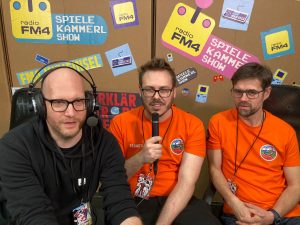
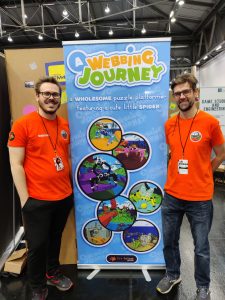
From Wednesday, 24.08.2022, until Sunday, 28.08.2022, players from all over the world played our game “A Webbing Journey” at Gamescom 2022 in Cologne. Our booth was run by Sebastian Uitz, Manuel Santner, and Fabian Schober, and we have been one of the only two Austrian games in the indie area this year. The second one is Gibbon from Broken Rules. The size of the Gamescom is just crazy compared to the Austrian events, with over 250.000 people attending this year. We prepared a new demo level for this event, and the feedback was great, as always. In addition, we made valuable connections to the games industry through other game devs, publishers, and the press.
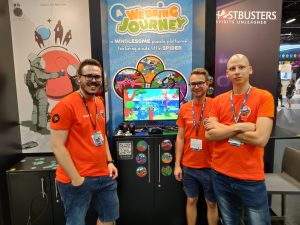
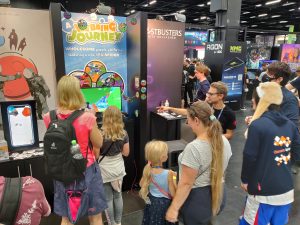
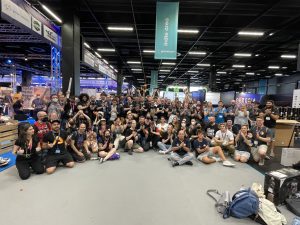
The futurezone Awards 2022 are looking for the most innovative ideas and projects. Three finalists (each category) have now been selected from the numerous submissions.
ITEC was nominated for two projects: 5G Virtual Realities and GAIA (together with Bitmovin).

The ADAPT workshop took place in Macau, China, on 09 Oct 2022 at the IEEE ITSC conference with more than 50 international attendees! The ADAPT-Team has successfully participated!
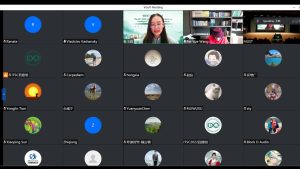
Bitmovin, a leading provider of video streaming infrastructure, and the University of Klagenfurt announced they will collaborate on a two-year joint research project worth €3.3million to develop a climate-friendly adaptive video streaming platform called ‘GAIA’. The Austrian Research Promotion Agency (FFG) will co-fund the project, providing an initial €460,000 in funding for the first year.
Project ‘GAIA’ aims to identify ways to improve sustainability and reduce energy consumption across the end-to-end video streaming chain by
We are happy to announce and our congratulations to Dr. Hermann Hellwagner for receiving the appreciation award of Carinthia in the area of natural/technical sciences.
The “Game Studies and Engineering” master’s program can be studied at the University of Klagenfurt for five years. It’s much more about technical skills, a critical understanding of the influence of games on society “as well as the courage and creativity to use this knowledge and experience in your own innovative ways for yourself and for society,” says program director Felix Schniz.
Carinthian newspaper “Kleine Zeitung” interviewed current and former ITEC team members about how games will change in the future. Read the whole article here about former “Octopus project” colleagues Fabian and Daniela from “Dirty Paws Studio” and Sebastian’s “A Webbing Journey” (German only).
Titel: CardioHPC: Serverless Approaches for Real-Time Heart Monitoring of Thousands of Patients
Authors: Marjan Gusev, Sashko Ristov, Andrei Amza, Armin Hohenegger, Radu Prodan, Dimitar Mileski, Pano Gushev, Goran Temelkov
17th Workshop on Workflows in Support of Large-Scale Science
Abstract: We analyze a heart monitoring center for patients wearing electrocardiogram sensors outside hospitals. This prevents serious heart damages and increases life expectancy and health-care efficiency. In this paper, we address a problem to provide a scalable infrastructure for the real-time processing scenario for at least 10000 patients simultaneously, and efficient fast processing architecture for the postponed scenario when patients upload data after realized measurements. CardioHPC is a project to realize a simulation of these two scenarios using digital signal processing algorithms and artificial intelligence-based detection and classification software for automated reporting and alerting. We elaborate the challenges we met in experimenting with different serverless implementations: 1) container-based on Google Cloud Run, and 2) Function-as-a-Service (FaaS) on AWS Lambda. Experimental results present the effect of overhead in the request and transfer time, and speedup achieved by analyzing the response time and throughput on both container-based and FaaS implementations as serverless workflows.